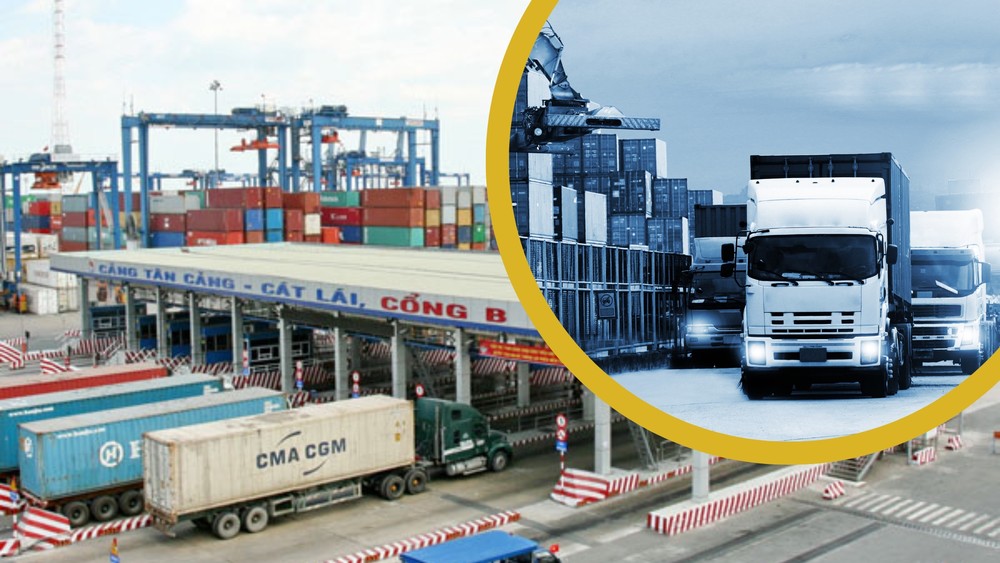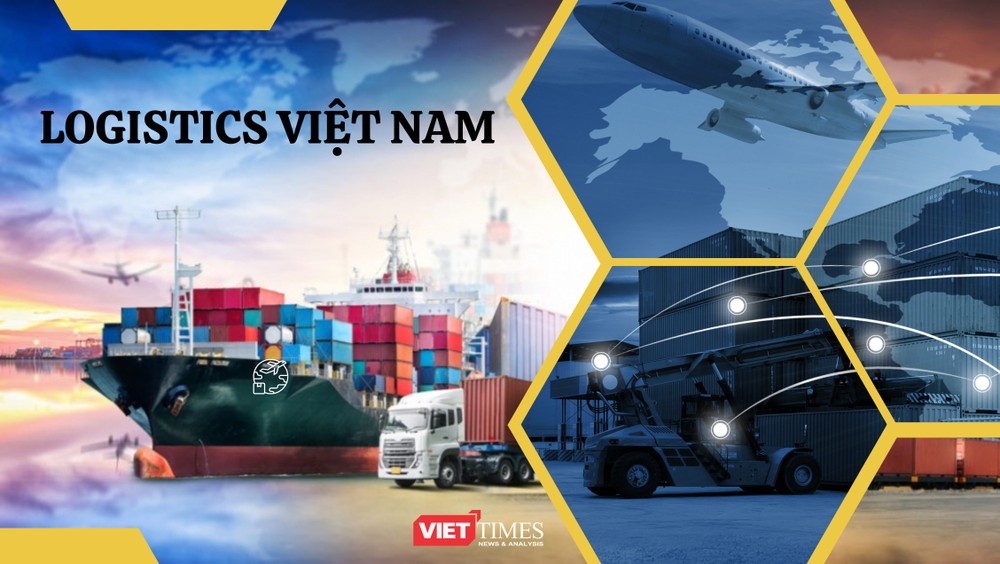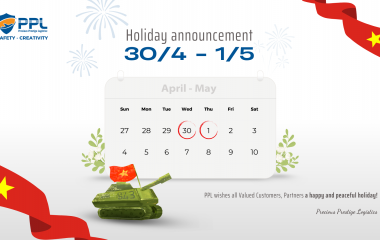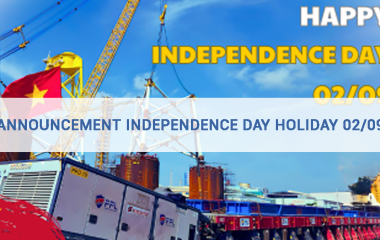Where is Vietnam’s logistics industry standing on the world map?
Logistics is a service industry that is considered the lifeblood of the economy. It plays an important role in connecting and promoting economic and social development.
In this article, we take a look at how Vietnam’s logistics develops and the future of the industry in the coming years.
Current status of logistics in Vietnam
Vietnam has a geographical location stretching from North to South and a long coastline with several deep-water ports suitable for rail and sea freight transport, in addition to the main transportation by road and rail. road no.
For freight by railCurrently, the national railway network has a total length of 3,143 km and has 277 stations, of which 2,703 km of main lines, 612 km of stations and branch roads. The railway passes through 34 provinces and cities and 4/6 economic regions of the country.
The operating efficiency on most of the main railway lines is currently only about 17-25 pairs of trains/day and night, the average operating speed for freight trains is 60 km/h. Most of the railway lines were built a long time ago, so they have low technical standards, have many limitations in terms of loads, so the train speed is low, reducing competition compared to other modes of transport.
For transportation by water, by seaAlthough in the world this is the route that accounts for 80% of the transported goods, in Vietnam it only accounts for less than 20% of the transported goods.
According to the Vietnam Shipowners Association, the fleet of ships with Vietnamese flags currently has 1,563 ships, with a total tonnage of about 12.7 million DWT. Specialized fleet accounts for the majority with 1,043 vessels, total tonnage of 11.3 million DWT. However, among the above-mentioned cargo ships, nearly 800 ships (77%) are small and medium-sized cargo ships (total tonnage from 5,000 GT to 10,000 GT). There are only 13 ships over 30,000 GT with an average age of 16.8.
Compared to the world, Vietnam’s container fleet is too small and almost does not grow in the period 2016 – 2020. Currently, the country has only 10 container shipping companies, owning 48 container ships with a total capacity of 39,519 Teus, gross tonnage 548,236 DWT.
Vietnam’s fleet can only run inland waterway freight and short routes to China and Southeast Asia. The market share of transporting goods for export to Europe and America fell into the hands of foreign enterprises with large scale and payload. The market share of imported goods is decreasing. If in 2015, the Vietnamese fleet took up 11% of the market share, by 2018 it will be 7% and in 2020 it will be 5%.
For road transportalthough logistics costs are much higher than by sea and rail (40 feet container shipping cost from Hanoi to Ho Chi Minh City. Ho Chi Minh City is about 40 million VND, 9.7 times higher than shipping by sea and 2.5 times higher than shipping by rail.), but most businesses still choose this method because road transport is directly connected to the system of seaports, airports, and railway stations, is highly adaptable to all terrains and can be proactive. about shipping time.
Compared with the above types, road is still the dominant mode of transport, accounting for over 70% of total freight.
For air freightAccording to the Civil Aviation Authority of Vietnam, there are currently nearly 70 international airlines and 4 domestic airlines transporting passengers and goods, of which 29 are national airlines using specialized aircraft. cargo use. International airlines account for 80% of total air freight in Vietnam.
Although Vietnam also has cargo airlines such as Vietnam Airlines Cargo or Vietjet Air Cargo, it does not use specialized aircraft to carry goods, but combines passenger and cargo transportation. At the end of 2022, the transport airline IPP Air Cargo of “brand name king” Jonathan Hanh Nguyen applied for a license to fly, but then in the face of the gloomy situation of the global economy, the company’s Board of Directors has decided to withdraw the application.
Recently, a newcomer has entered the market, Vietravel Airlines Cargo. The company’s goal is that in the first year, it will use 2 to 4 specialized cargo aircraft, Boeing 737-800F series, to transport domestic and Asian cargo. The number of aircraft will double in the next year.
Currently, the number of enterprises in the field of logistics in Vietnam is more than 40,000 and is continuing to grow, covering the fields of transportation, warehousing, customs clearance and distribution. Of these, there are more than 5,000 enterprises operating in the field of international logistics, with 89% being Vietnamese small and medium sized enterprises, 10% being joint venture enterprises and 1 enterprise with 100% foreign capital.
Limitations of Vietnam logistics
Although accounting for a large number of Vietnamese logistics enterprises, only 30% of the market share, the rest is a piece of cake for foreign businesses.
Vietnam’s logistics costs are still relatively high (figures in 2022 – total logistics costs account for 16.8% of GDP, while the world average is 11% of GDP). Customs procedures and specialized inspection are complicated and overlapping; Customs clearance time for import and export shipments is prolonged. The connection between logistics enterprises and the domestic leading role of the industry has not yet formed.
The lack of synchronization in logistics infrastructure is also a barrier. For example, Cat Lai port is the largest international container port in Vietnam, a key focal point in the seaport system in the Southeast region, but for many years, the traffic structure is not reasonable, the roads are congested, making operation difficult. Transport efficiency is significantly reduced.
According to Mr. Tran Thanh Hai, Deputy Director of the Import-Export Department, Ministry of Industry and Trade, the transport infrastructure system is not synchronized, the connectivity is still limited between sea, railway and road transport. The lack of national and international logistics centers in key economic areas to act as a focal point for goods distribution are barriers, causing logistics costs to rise. In addition, the participation of foreign enterprises with new forms of transportation and modern digital technology also poses challenges for domestic logistics enterprises.
Another limitation is the quality of human resources. It is expected that by 2030, the demand for human resources in logistics will be more than 200,000 people. According to Mr. Nguyen Minh Duc, Vice President of the Vietnam Logistics Human Resource Development Association, the demand for logistics human resources is very large, but the current human resources and quality of human resources do not meet the requirements of the market (only meet the requirements of the market). about 10% of demand).

According to the Vietnam Logistics Report 2022, the number of well-trained workers in logistics services only accounts for about 5-7% of the number of employees working in this field. According to a survey by the Institute for Research and Development of Ho Chi Minh City, up to 53.3% of enterprises lack staff with professional qualifications and logistics knowledge, 30% of enterprises have to retrain their employees. employees, only 6.7% of enterprises are satisfied with the expertise of employees.
Mr. Duc said that schools with logistics training need to innovate their programs and link more with businesses to improve students’ practical knowledge about logistics.
In addition, as mentioned above, the rail train speed is low, the fleet of small tonnage ships, the high-speed road system connecting provinces and cities across the country is still under construction. Having specialized aircraft for cargo, the limitation of warehousing, etc. are the factors that make Vietnam’s logistics not shorten the delivery time as well as expand its scope to European and American countries.
The room for development is huge
However, according to international experts, the space for logistics is still very large because Vietnam is one of the countries with the fastest economic growth in the world. Vietnam’s geographical location is in the heart of the Asia-Pacific region, where developing economies are dynamic and also a busy freight route. Vietnam’s international economic integration is deepening with many bilateral and multilateral trade agreements being signed.
The Vietnamese logistics market is ranked 11th in the group of 50 global emerging logistics markets, with a growth rate of 14%-16%/year. In 2022, the total export and import turnover will reach more than 723 billion USD, up 10% compared to 2021. This number has a great contribution from the logistics industry.
Mr. Vo Duy Thang, Head of Transportation and Maritime Services Department, Vietnam Maritime Administration, said that according to the master plan on development of seaport system in the period of 2021-2030, with a vision to 2050, cargo traffic is forecasted through through Vietnam’s seaports by 2030 will be from 1,140 to 1,423 million tons. This figure shows that the market for shipping is very large, opening up opportunities for Vietnamese and foreign fleets to participate in the market.
Mr. Dao Trong Khoa, Chairman of the Board of Directors of Asean Cargo Gateway Joint Stock Company, said that Vietnam’s air transport growth rate was 9.5%, the largest in Southeast Asia, twice the growth rate of Vietnam. The region is 4.7%, which is also a large market for logistics businesses.
The explosive trend of e-commerce in Vietnam with the “big guys” such as Shopee, Lazada, Tiki… has created favorable conditions for businesses to invest in warehouse infrastructure, transportation means, etc. logistics supply chain formation. This model is called 5PL, or e-Logistics – a new logistics method associated with e-commerce.
So how does Vietnamese logistics “take off”?
First, the government’s interest in the logistics industry must be mentioned.
The government has been very interested in promoting the development of the logistics industry in Vietnam. On February 14, 2017, the Prime Minister issued Decision No. 200 approving the Action Plan to improve competitiveness and develop logistics services in Vietnam until 2025. This is the brick laying the foundation. foundation, bringing new vitality to the development of Vietnam’s logistics industry.
On December 22, 2021, the Prime Minister again issued Decision No. 221, amending and adjusting a number of contents in Decision No. 200 to suit the actual situation.
The content of Decision 221 mentions the goal that by 2025, the contribution of the logistics service industry to GDP will reach 5%-6%.
Decision No. 221 has supplemented the action roadmap for the industry until 2025. Specifically, in 2023, a preliminary review and evaluation of the results of the implementation of the action plan will be conducted, and the theoretical and practical basis for preparation of the action plan will be prepared. research and develop a strategic project to develop Vietnam’s logistics service industry in the period of 2025 – 2035, with a vision to 2045.
The Prime Minister assigned the Ministry of Industry and Trade to preside over the development of this project, with the goal of “bringing logistics development, creating connections to bring goods to and from places, best growth and control.” Especially how to connect Vietnamese goods to reach out to the world”. The Ministry of Industry and Trade recently worked with leaders of Hai Phong, Quang Ninh, Thua Thien Hue, and Da Nang cities – the focal points of logistics development in the North and Central regions. the Northwest, the Southern provinces, especially the Southwest region.

According to Mr. Tran Thanh Hai, Deputy Director of the Import-Export Department under the Ministry of Industry and Trade, in order for Vietnam’s logistics industry to “take off”, it is necessary to implement a number of solutions, including investment and development of synchronous transport infrastructure. and more modern; training human resources to meet market demand; promulgating policies to encourage logistics enterprises to digitally transform and transform green; simplify and improve the quality of administrative procedures; invest in modern means of transport; implementation of smart customs model; and implement financial and credit support policies for logistics enterprises.
According to Mr. Hai, logistics development and support policies need to be suitable to the economic characteristics of each locality. Special attention is paid to completing the legal corridor to ensure a smooth and adequate policy to operate logistics activities.
According to the proposal of the Vietnam Association of Logistics Service Enterprises, the state needs to standardize logistics infrastructure services by applying standardized freight rates and unifying the toll collection system. In addition, it is necessary to form an electronic data exchange system between parties such as transport companies, warehouses and customs. If the parties are connected via a single electronic system, the business processing will save a lot of time.
Related Posts
New Posts
- HOLIDAY ANNOUNCEMENT: REUNIFICATION DAY & INTERNATIONAL LABOR DAY (April 30 - May 1, 2025)
- ANNOUNCEMENT OF HUNG KINGS’ COMMEMORATION DAY 2025
- PTSC Thanh Hoa and PPL Sign Strategic Partnership
- INDEPENDENCE DAY HOLIDAY ANNOUCEMENT
- PPL Teambuilding 2024: Uniting Our Strength, Igniting Success!
- Charity Program Warms Hearts Of PPL in Phuoc Hai Town


_cr_380x240.png)




Comments